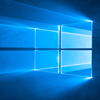Windows Updates
Windows 10
1909 – March 10, 2020—KB4540673 (OS Builds 18362.719 and 18363.719)
1903 – March 10, 2020—KB4540673 (OS Builds 18362.719 and 18363.719)
1809 – March 10, 2020—KB4538461 (OS Build 17763.1098)
Windows 8.1
March 10, 2020—KB4541509 (Monthly Rollup)
March 10, 2020—KB4541505 (Security-only update)
Windows 7
March 10, 2020—KB4540688 (Monthly Rollup)
March 10, 2020—KB4541500 (Security-only update)
***IMPORTANT***
READ THE SECTION “Before installing this update”
Prerequisite:
You must install the updates listed below and restart your device before installing the latest Rollup. Installing these updates improves the reliability of the update process and mitigates potential issues while installing the Rollup and applying Microsoft security fixes.



